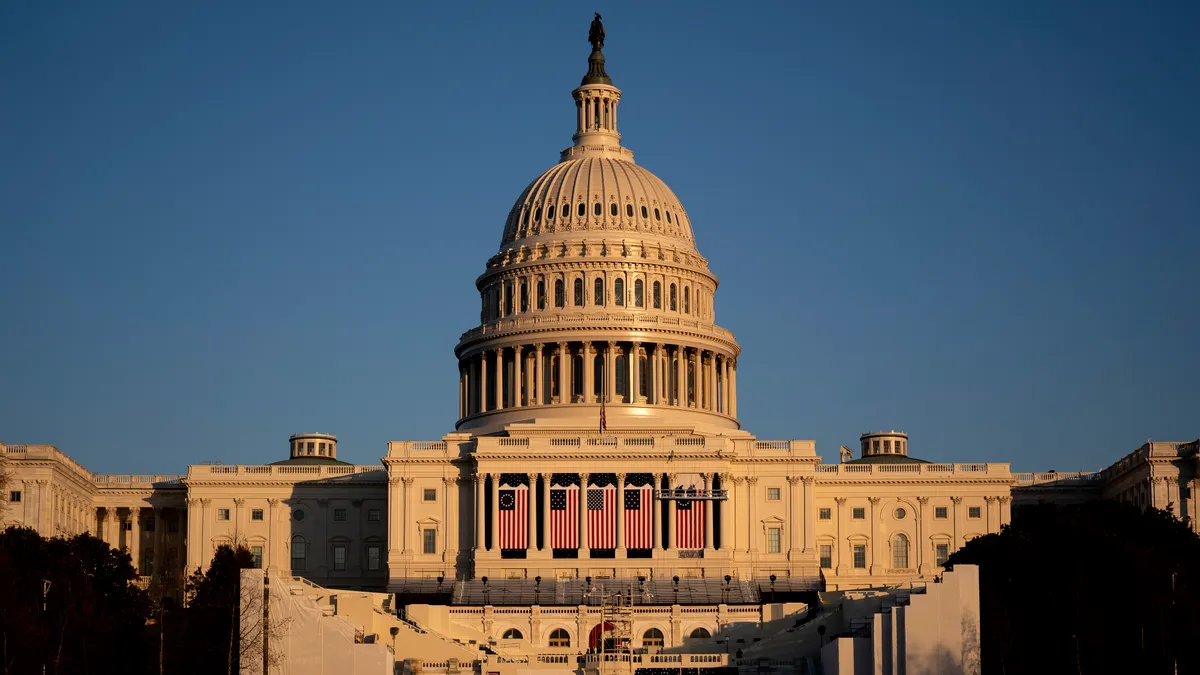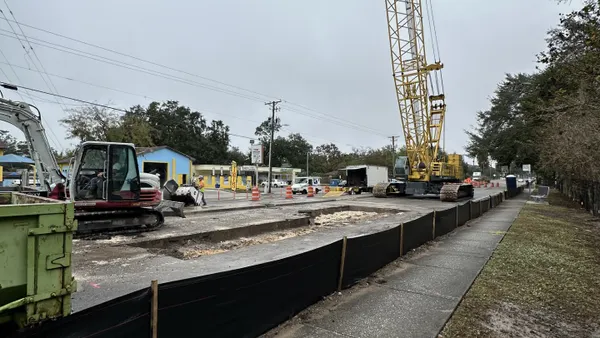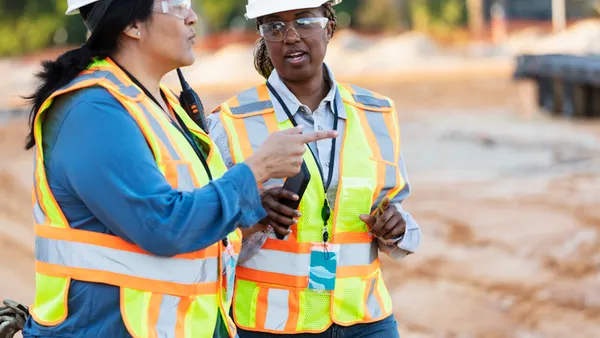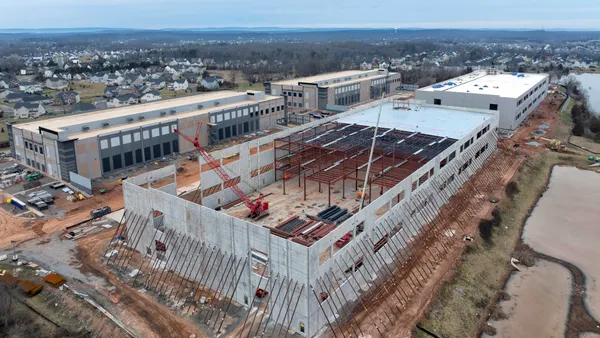Dive Brief:
- The Biden Administration's Buy Clean task force released its initial set of recommendations for how the federal government should cut carbon emissions, including using its purchasing power to promote wider adoption of green construction materials, the White House announced.
- Transportation Secretary Pete Buttigieg, General Services Administration Administrator Robin Carnahan and Deputy National Climate Advisor Ali Zaidi announced the guidance — which covers most of the materials the federal government purchases — on a visit to the Cleveland-Cliffs Direct Reduction steel plant in Toledo, Ohio, which manufactures an intermediary feedstock product that is integrated into steel plates.
- The federal government is the largest purchaser of construction materials, the White House said, so it is uniquely positioned to shift how they are made and used. That buying heft has been heightened with the $1.2 trillion Infrastructure Investment and Jobs Act, which will pump money into the building industry over the next five years, as will funding from the $485 billion Inflation Reduction Act and the $52 billion CHIPS Act.
Dive Insight:
The multi-agency Buy Clean recommendations stem from President Joe Biden’s December executive order, which directs the federal government to green its procurement practices and take other actions to achieve a net-zero emissions economy by 2050.
The White House also announced Thursday that it had added eight new member agencies to the task force, to bring to 17 the number of stakeholders involved across the federal government. Together, the expanded Task Force agencies account for 90% of all federally-financed and purchased construction materials, according to the release.
“The Federal Government is the largest direct purchaser in the world and a major infrastructure funder. By leveraging the U.S. Government’s purchasing power, President Biden is ensuring that American manufacturing is positioned to compete and lead, while catalyzing markets and accelerating innovation across the country,” the release said.
Specifically, the Buy Clean task force called for the government to:
- Prioritize procurement of low-carbon steel, concrete, asphalt and flat glass. These four materials are some of the most carbon-intensive in the construction stack and account for nearly half of U.S. manufacturing greenhouse gas emissions. They also represent 98% of the construction materials the government purchases, according to the release.
- Expand the use of low carbon materials in federally-funded projects. In addition to the materials the government buys directly, Buy Clean will cover federally-funded projects. The agencies involved with Buy Clean are now developing their procurement and purchasing policies.
- Convene state entities to partner on Buy Clean procurement, and align state and federal clean procurement practices. The White House said it will bring together states to share knowledge and build capacity for public construction projects that support workers and reduce carbon emissions.
- Increase embodied carbon data transparency by accelerating the use of environmental product declarations among manufacturers. The administration will improve and expand the verification of environmental product declarations, including greenhouse gas emissions reporting for supply chain production of these materials.
- Launch pilot projects across the country to demonstrate Buy Clean practices. Buy Clean pilot programs have launched across the country — including in Denver, Colorado; Salt Lake City, Utah; Champlain, New York; and Lukeville, Arizona—in partnership with local contractors and subcontractors.
The federal government’s strategy to boost low-carbon construction materials could have a big impact, since the building industry is a massive generator of greenhouse gasses.
For example, concrete, the most widely used material on earth after water, contributes up to 8% of the world’s carbon emissions while steel adds another 8%.












